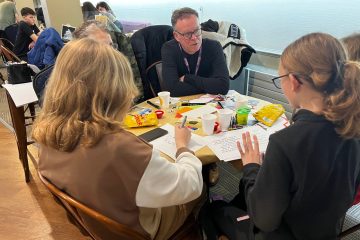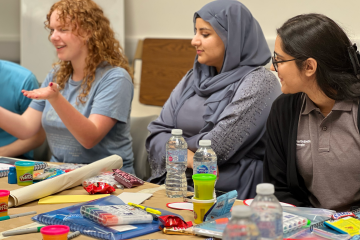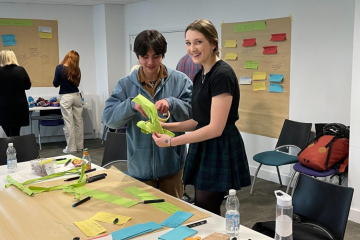Record numbers of young people are seeking help from the NHS for mental health problems. So when Xyla Digital, a digital therapies provider, reached out for support with the design and development of a new web-based platform aimed at helping young people manage their waiting times for mental health services, we were more than happy to get involved.
Xyla Digital recognised the need for a user-centric platform empowering young people to manage their waiting times for mental health services effectively, seeking our expert assistance to ensure the platform would be intuitive and engaging and maintain strict confidentiality standards. They also desired the involvement of young people throughout the design process to ensure the platform truly met the needs of the end user by consulting with representatives from their age group.
Solution
With our expertise in youth participation and engagement, we took on the task of guiding Xyla Digital through a collaborative design process for the new platform, taking the following steps.
1. Engaging young people: We started by facilitating workshops and focus groups with young people to gather their insights, preferences, and ideal requirements for a waiting time management platform of this nature. These sessions worked by empowering young people to contribute their perspectives and feedback, ensuring their voices were central to the design process really early on when ideas could be ‘blue sky’.
2. Co-design and iterative process: Working closely with Xyla Digital and the young participants, we facilitated a co-design process which involved young people in decisions regarding the platform’s look, feel, and usability throughout. Young participants contributed to wireframe development, colour schemes, layout, and other design elements. This iterative approach ensured that the platform’s design reflected the preferences and needs of its intended users.
3. Confidentiality statement wording: Recognising the importance of confidentiality, we facilitated collaboration with young people to craft the confidentiality statement for the platform. The young participants provided valuable insights on language, tone, and content, ensuring that the statement was clear and respectful, and addressed any potential concerns regarding data privacy.
4. Usability testing: To validate and refine the platform’s usability, we organised usability testing sessions with young people. These sessions allowed participants to navigate the platform, provide feedback on its functionality, and suggest improvements. This iterative testing process ensured that the platform was user-friendly and intuitive, meeting the specific needs of young users.
5. Parent user testing: To further enhance the platform’s inclusivity and address potential concerns from parents, we incorporated parent user testing into the final stages of development. This involved engaging parents in testing the platform, gathering their feedback, and integrating their perspectives before finalising the platform, to create a comprehensive and well-rounded solution that worked for everyone.
Impact
As a result of our collaborative design approach, we delivered significant positive outcomes, including:
1. User-centric design: Through active involvement in the design process, young people played a pivotal role in shaping the platform’s look, feel, and usability. The end product was a user-centric platform that resonated with young users and addressed their unique needs, ensuring an engaging and effective waiting time management experience.
2. Enhanced confidentiality statement: With young people’s insights and input, the confidentiality statement for the platform was crafted to inspire trust and confidence, using accessible language, and removing the legal jargon. The wording reflected the concerns and preferences of young users, reassuring them about data privacy and confidentiality throughout their engagement with the platform.
3. Improved usability and functionality: Through extensive usability testing and refinement, the platform’s final usability and functionality are top-notch. The insights provided by our young participants allowed all necessary adjustments to be made and ensured a seamless and intuitive user experience.
4. Inclusive parent user testing: By incorporating parent user testing, we ensured the platform’s comprehensiveness and addressed potential concerns from parents. Parent feedback was integrated, promoting a sense of confidence and trust among parents, ultimately benefiting young users.
Conclusion
Thanks to our comprehensive approach, the final result, Xyla Digital’s web platform, provided a seamless experience for young people to manage wait times for mental health services – a service which we all know is badly needed in the UK.
Each element of the platform’s development was designed collaboratively, and influenced by the insights and feedback gathered from young participants. This attention to detail ensured a holistic and effective waiting time management solution, empowering young people to take control of their mental health journey – and our team of young people couldn’t be more proud of the results.
Testimonial
“Working with Participation People on our new web-based platform for the mental health and wellbeing market was a game-changer. They incorporated young people’s insight from the start, making sure their voices guided the entire design process.
Their inclusive research, UX design skills, and user testing led to a platform that truly resonates with our audience. Participation People’s passion for empowering young people is infectious, and we highly recommend them for any user-centric project. Thank you, Participation People, for helping us make a difference!”
Sunna VanLoo, Chief Operating Officer – Health & Community Services, Acacium Group


